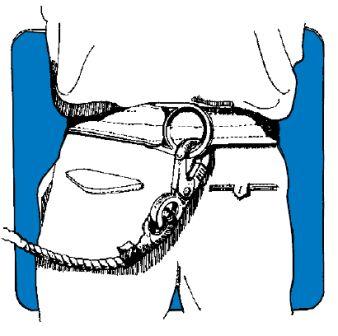In today’s world, with increasing regulations and legal actions, businesses must prioritize HSE management to safeguard their employees, reputation, and bottom line. Accidents can have severe consequences, not just for individuals but also for the company’s overall success.
While common HSE mistakes are often avoidable, many businesses fall short in these areas. In this article, we will highlight the 10 most common HSE errors made by businesses and their potential consequences. By understanding these pitfalls and adopting best practices, companies can significantly reduce risks and achieve sustainable growth.
1. Failure to implement adequate safety measures:
One of the most common HSE mistakes is failing to implement adequate safety measures. This can include not providing personal protective equipment, not training employees on how to use machinery safely, or not conducting regular safety inspections.
By failing to take these important steps, businesses are putting their employees at risk of accidents and injuries, which can have a significant financial impact. In addition, these injuries can lead to lawsuits, further tarnishing the company’s reputation.
2. Not conducting regular risk assessments:
Risk assessments are an essential tool for identifying and assessing potential hazards in the workplace. By conducting regular risk assessments, businesses can take proactive steps to mitigate risks and prevent accidents.
Failing to conduct regular risk assessments means that businesses are operating in the dark, not knowing the potential hazards that their employees face. This can lead to costly accidents and injuries, and it can also make it more difficult to comply with HSE regulations.
3. Not effectively communicating with employees about HSE procedures:
Employees need to be aware of HSE procedures to ensure they can work safely. This includes training employees on HSE procedures, providing clear signage, and conducting regular safety inspections.
By failing to communicate effectively with employees, businesses are setting them up for failure. Employees may not be aware of the risks they face, and they may not know how to prevent accidents. This can lead to serious injuries and even death.
4. Failing to maintain equipment and facilities:
Proper maintenance of equipment and facilities is essential for preventing accidents. Businesses should have a system in place for regularly inspecting and maintaining equipment, as well as for reporting and addressing any defects or issues.
Failure to maintain equipment can lead to breakdowns, which can cause serious injuries. In addition, it can make it more difficult to comply with HSE regulations.
5. Not managing hazardous substances and materials:
Hazardous substances and materials should be handled and stored with care to prevent accidents and pollution. Businesses should have a system in place for classifying, labeling, and storing hazardous substances, as well as for training employees on how to handle them safely.
By failing to manage hazardous substances properly, businesses are putting their employees and the environment at risk. In addition, this can lead to costly fines and legal penalties.
6. Not responding to incidents effectively:
Incidents are inevitable, but businesses can minimize their impact by responding to them effectively. This includes having a plan for responding to incidents, conducting investigations, and taking corrective actions to prevent similar incidents from happening again.
Failure to respond to incidents effectively can lead to further injuries, property damage, and environmental damage. In addition, it can damage the company’s reputation and make it more difficult to recover from the incident.
7. Failing to comply with regulations:
Businesses must comply with all applicable HSE regulations. This includes having permits, licenses, and approvals, as well as following safety procedures and reporting incidents.
By failing to comply with regulations, businesses are putting themselves at risk of fines, legal action, and even criminal prosecution. This can also lead to damage to their reputation and loss of customers.
8. Not training employees on HSE issues:
Employees need to be trained on HSE issues to ensure they work safely. This includes training on hazard identification, risk assessment, safety procedures, and emergency response.
By failing to train employees, businesses are setting them up for failure. Employees may not know how to identify and assess hazards, and they may not know how to respond to emergencies. This can lead to serious injuries and even death.
9. Not providing adequate supervision:
Supervision is essential for ensuring that employees are working safely. Businesses should provide adequate supervision to all employees, especially those who work in hazardous environments.
By failing to provide adequate supervision, businesses are putting their employees at risk. Supervisors can help to identify and assess hazards, and they can also help to ensure that employees are following safety procedures.
10. Not having a strong safety culture:
A strong safety culture is essential for preventing accidents and injuries. This includes creating a workplace culture that values safety, communicating safety messages effectively, and providing incentives for safe work practices.
By failing to create a strong safety culture, businesses are sending a message to their employees that safety is not a priority. This can lead to complacency and a decrease in safety performance.
Conclusion
Avoiding these common HSE mistakes is crucial for any business that wants to operate safely and responsibly. By implementing a robust HSE management system, providing regular safety training, conducting regular safety audits, involving employees in HSE decision-making, investing in safety equipment and training, and creating a culture of safety, businesses can significantly reduce their risk of accidents, injuries, and environmental damage. This can lead to improved safety performance, reduced costs, and enhanced reputation.
Download Now for FREE!!
Available only for all registered Users, does not require any payment to download.
| Title | |||
|---|---|---|---|
|
Mechanical power transmission apparatus 1 513 downloads |
Checklist, Free Files | October 21, 2022 | Please login to download |
|
Machine guarding 1 513 downloads |
Checklist, Free Files | October 21, 2022 | Please login to download |
|
HEALTH AND SAFETY MANUAL 1 13417 downloads |
Free Files, Learning/Training | October 14, 2022 | Please login to download |






